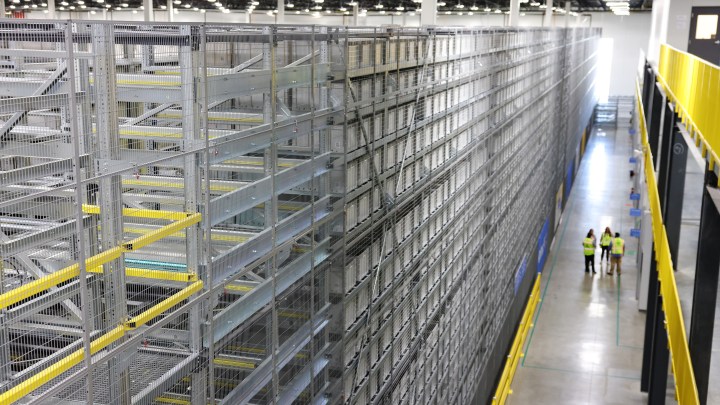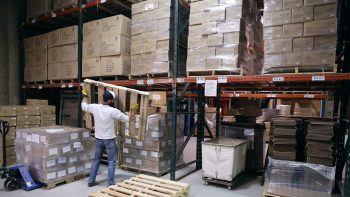
As transportation bottlenecks clear, supply chains face shortage of warehouse space
As transportation bottlenecks clear, supply chains face shortage of warehouse space

Last week, “Marketplace” paid a return visit to the Marine Exchange of Southern California — which is basically “air traffic control” for the ports of Los Angeles and Long Beach.
Last year, 66 cargo ships were in a holding pattern, stacked up, waiting to come in to unload their cargo. On our return visit? There were only eight.
That’s a piece of good news about supply chains, given how congested they’ve been throughout the pandemic. But the news about another key component is not good. This week, the logistics managers index — which tracks prices throughout supply chains — found that warehousing costs are stubbornly staying high.
There’s a reason you may already be seeing inflatable snowmen and Santa Clauses on display right now.
“You can only fit so much into a warehouse,” said Weston LaBar at freight broker CargoMatic.
A lot of retailers had to bring in holiday goods early, he said. Some still have leftover inventory, and, as a result, warehouse rents are running hot.
Last quarter, “warehouse asking rates across the country surged 22% year over year,” said Jason Tolliver with the real estate firm Cushman & Wakefield. “That is the fastest rate of growth ever on record.”
Rising construction costs are making it difficult to build new warehouses, Tolliver added. That’s if you can even find a place to put one.
“In many cases, particularly if you’re in Southern California or, you know, proximate to the ports of New York and New Jersey, there just simply is no land available to construct a new warehouse or logistics facilities.”
With warehouses full, there’s not a lot of stuff for transportation companies to move.
“They think we’re heading into a recession because what should be peak season never happened,” said Zac Rogers at Colorado State University, who puts together the logistics managers index.
With less demand for any mode of shipping, transportation prices have plummeted, Rogers said.
“If you look at the price of a container going from China to the West Coast of the United States, right now it’s in the $3,000 to $4,000 range for a container. This time last year, it was over $20,000.”
Rogers said that those costs will likely rise, as retailers work through their inventory and start importing more stuff.
There’s a lot happening in the world. Through it all, Marketplace is here for you.
You rely on Marketplace to break down the world’s events and tell you how it affects you in a fact-based, approachable way. We rely on your financial support to keep making that possible.
Your donation today powers the independent journalism that you rely on. For just $5/month, you can help sustain Marketplace so we can keep reporting on the things that matter to you.

















